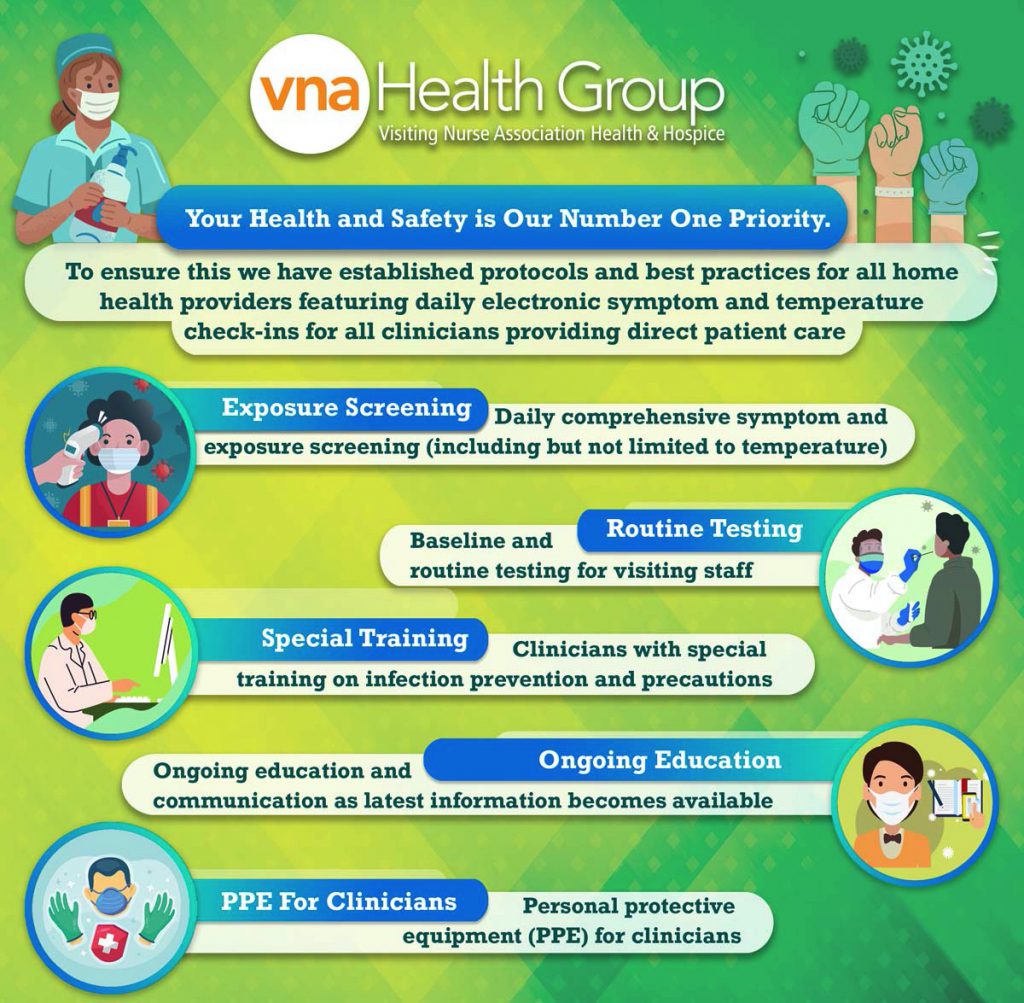
Hospice care is end-of-life care that offers comfort to the dying person and their families. It helps the patient and their family cope with the difficult decisions they must make, easing the burden on them and their loved ones. While hospice care is not a first choice, there are many services and benefits that can be provided to those who require it. In this article, we will look at what hospice care is and what you can expect. Here are some benefits and services that are most commonly offered.
Hospice care is designed to provide comfort
Hospice care is a philosophy that accepts death as part of life. It provides comfort and peace for the last stages of a person’s illness. The hospice's primary objective is to manage the symptoms and not cure the underlying illness. A team of professionals works to relieve the symptoms of the illness and ensure that the patient can enjoy the last days of their life as fully as possible. Patients and their families are involved in making decisions about care and will be kept informed of any developments.
An additional team of nurses and doctors is responsible for the care of patients. During routine visits, a social worker will often lead family meetings to discuss their feelings and educate them on the illness and death. The team can offer spiritual counselling and recommend support systems to help alleviate anxiety and stress. Volunteers are trained to provide practical assistance and respite to the patient and their family in addition to medical care.

It is the end of life care
End-of-life care can be difficult. Patients may want to preserve their dignity while ensuring they die peacefully. Patients with advanced disease often have less time and are able to make their own decisions. It is best to offer support, reassurance, and honor your loved one's wishes to help them through this difficult period. You may even want to hold their hand or talk to them in their final moments.
While hospice is dependent on loved ones for support, it also offers professional help to cope with their changing circumstances. The basic support provided by family members will continue, but it is possible that this support may increase over time. Some of the assistance required may be helping the patient to get dressed, bathe, and take medications. The hospice team will help the patient in these areas as well as make their final days comfortable. It is possible to get hospice care early in the disease process, so that your loved one can receive the right level and comfort.
It eases the burden on families
Hospice offers many benefits for patients as well as their families. Early enrollment allows patients to maintain dignity and comfort while they are ill. The family's burden is lessened and the program helps families prepare for the eventual loss of a loved. A number of benefits of hospice care can be found on the Medicare website. The most expensive benefit is in-person support, which costs around $200 per day. Hospice services include equipment rentals as well as a hotline available 24 hours for patients to speak to a nursing professional for support.
Hospice care has grown to be a $19 billion industry that is heavily funded by taxpayers. It is designed to reduce the burden on family members, as families often provide the most care. Joy Johnston changed her view of hospice after meeting with one. Her mother suffered from constipation, an uncomfortable condition that plagues many dying patients. Joy Johnston was an employee at a hospice and helped her mom move her bowels. It was something she had never done for her mom.

It improves the quality of life for people.
Research shows that hospice care can extend the lives of terminally ill patients. Two studies revealed that hospice patients had a longer life expectancy than their counterparts who did not receive the care they required. According to a study published by the New England Journal of Medicine (NEJM), cancer patients who received palliative medicine were able have longer lives and enjoy a higher quality of living. A second study showed that patients with lung carcinoma lived on average 3.3 months longer when they were provided hospice care.
Despite the fact hospice is chosen by fewer people than it does women, the overall death rate is low. Men, in particular, are slightly more likely than women to die within six months. It is also important to consider the reason why you are entering hospice. Patients with dementia and stroke experience lower mortality rates. This is possible because patients with dementia or complex medical conditions have a lower chance of complications. Hospice care may not be the best for all patients.
FAQ
What are the differences between different types of health insurance
There are three types of insurance that cover health:
-
Private health insurance covers most of the costs associated with your medical treatment. This type of insurance is typically purchased directly through private companies so that you only pay monthly premiums.
-
Although most medical costs are covered by public insurance, there are certain restrictions. Public insurance covers only routine visits to doctors and hospitals, as well as labs, Xray facilities, dental offices and prescription drugs. It also does not cover certain preventive procedures.
-
You can use medical savings accounts (MSAs), to save money for future healthcare expenses. The funds are held in an account that is distinct from all other types of accounts. Most employers offer MSA programs. These accounts are non-taxable and accrue interest at rates similar that bank savings accounts.
What can I do to ensure my family receives quality health care services?
Most states will have a department for health, which helps to ensure that everyone has affordable access to health care. Some states also have programs to cover low-income families with children. You can contact your state's Department of Health for more information about these programs.
What is the importance and purpose of the health system?
The health care system is an important part of any country's economy. It helps people live longer, healthier lives. It also creates employment for nurses, doctors, as well as other medical professionals.
All income levels are eligible for quality healthcare services through the Health Care Systems.
Understanding how the healthcare system works is crucial if you want to pursue a career in medicine, nursing, or any other medical profession.
What are the three primary goals of a healthcare system?
A healthcare system must have three main goals: to provide affordable care, improve patient outcomes, and reduce costs.
These goals were combined into a framework named Triple Aim. It is based off research by Institute of Healthcare Improvement. IHI published this in 2008.
This framework is meant to show that if we concentrate on all three goals together, then we can improve each goal without compromising the other.
This is because they aren't competing against one another. They support one another.
For example, improving access to care means fewer people die due to being unable to pay for care. This helps to lower the overall cost of healthcare.
We can also improve the quality of our care to achieve our first goal, which is to provide care at an affordable cost. It also improves outcomes.
What is the difference in public and private health?
In this context, the terms refer both to the decisions made and those of legislators by policymakers. These policies affect how we deliver healthcare services. The decision to build a hospital can be made locally, nationally, or regionally. Similar to the above, local, regional and national officials can decide whether or not to require employers offering health insurance.
What is a health care system?
The entire spectrum of health care is covered, including rehabilitation and prevention. It includes hospitals and clinics as well as pharmacies and community services.
Health systems are complex adaptive systems. These systems have emergent characteristics that cannot be predicted by simply looking at individual components.
Complex health systems can be difficult to comprehend and manage due to their complexity. This is where creativity is needed.
Creativity is a way to find solutions to problems that we don't know the solution to. Our imaginations are used to invent new ideas and improve things.
Because they are constantly evolving, health systems require people who think creatively.
Individuals who think creatively have the potential to change the way healthcare systems operate.
What are the different health care services?
A health care provider is a medical institution that offers healthcare services for patients. A hospital is an example of a healthcare facility. It typically contains many departments such the emergency room, intensive care unit and operating room.
Statistics
- For the most part, that's true—over 80 percent of patients are over the age of 65. (rasmussen.edu)
- Healthcare Occupations PRINTER-FRIENDLY Employment in healthcare occupations is projected to grow 16 percent from 2020 to 2030, much faster than the average for all occupations, adding about 2.6 million new jobs. (bls.gov)
- The health share of the Gross domestic product (GDP) is expected to continue its upward trend, reaching 19.9 percent of GDP by 2025. (en.wikipedia.org)
- About 14 percent of Americans have chronic kidney disease. (rasmussen.edu)
- Foreign investment in hospitals—up to 70% ownership- has been encouraged as an incentive for privatization. (en.wikipedia.org)
External Links
How To
What are the 4 Health Systems
The healthcare system includes hospitals, clinics. Insurance providers. Government agencies. Public health officials.
The overall goal of this project was to create an infographic for people who want to understand what makes up the US health care system.
These are the key points
-
Annual healthcare spending amounts to $2 trillion, or 17% of GDP. It's nearly twice the size as the entire defense budget.
-
Medical inflation reached 6.6% for 2015, more than any other category.
-
On average, Americans spend 9% of their income on health costs.
-
There were more than 300 million Americans without insurance as of 2014.
-
Although the Affordable Care Act (ACA), has been passed into law, it is not yet fully implemented. There are still large gaps in coverage.
-
The majority of Americans think that the ACA needs to be improved.
-
The US spends the most money on healthcare in the world than any other country.
-
If every American had access to affordable healthcare, the total cost would decrease by $2.8 trillion annually.
-
Medicare, Medicaid and private insurers pay 56% of healthcare expenses.
-
These are the top three reasons people don’t get insured: Not being able afford it ($25B), not having enough spare time to find insurance ($16.4B), and not knowing anything ($14.7B).
-
There are two types: HMO (health maintenance organisation) and PPO [preferred provider organization].
-
Private insurance covers all services, including doctor, dentist, prescriptions, physical therapy, and many others.
-
Public programs cover hospitalization, outpatient surgery, nursing homes, hospice care, long-term care, and preventive care.
-
Medicare is a federal program that provides health coverage to senior citizens. It pays for hospital stays and skilled nursing facility stays.
-
Medicaid is a program of the federal and state governments that offers financial assistance to low-income people and families who earn too much to be eligible for other benefits.